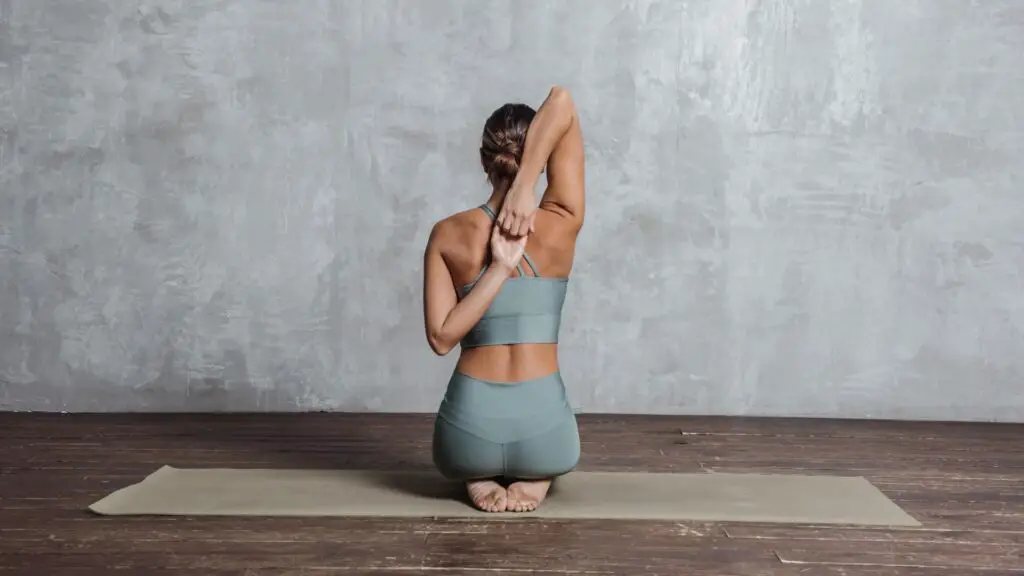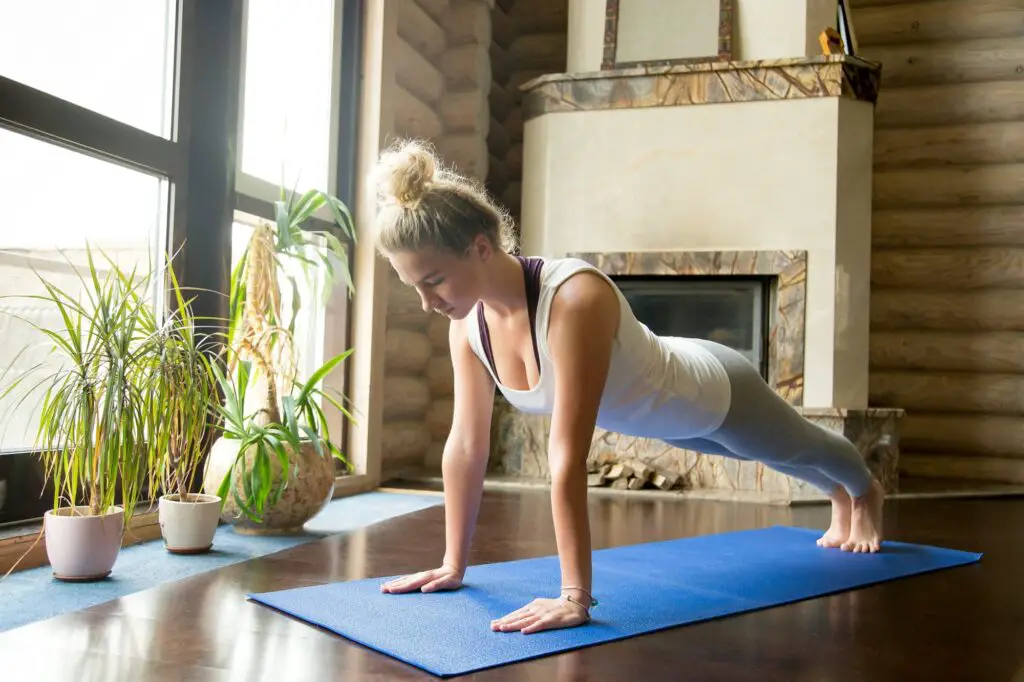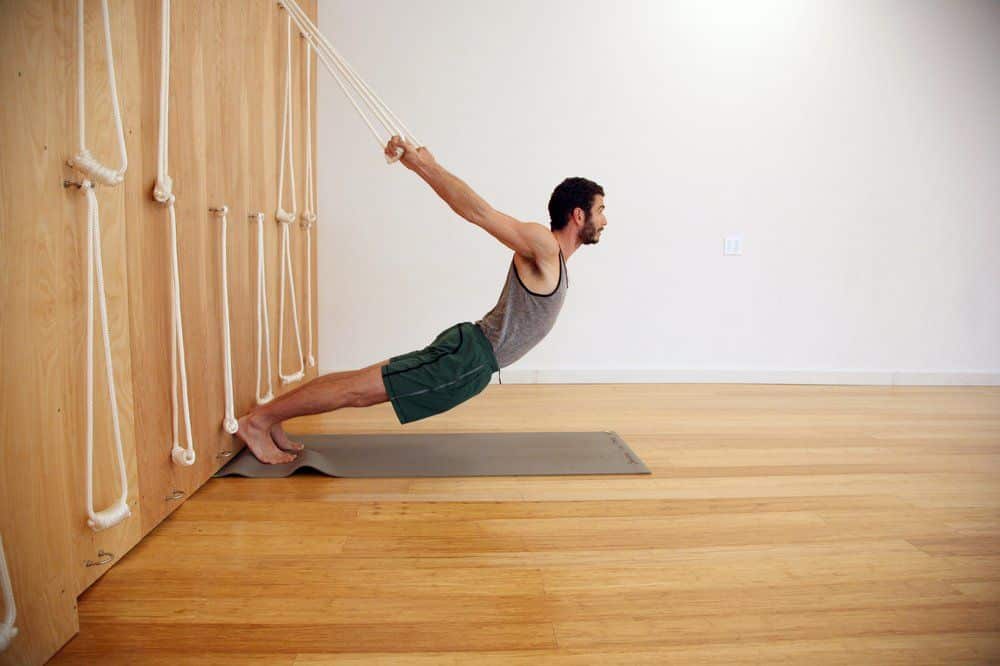Introduction
Do Wall Pilates Work: Pilates, a form of exercise that emphasizes core strength, flexibility, and overall body awareness, has gained immense popularity over the years. While traditional Pilates exercises often involve the use of specialized equipment like the reformer or Cadillac, there’s a growing interest in exploring alternative approaches, one of which is Wall Pilates. Wall Pilates is a unique variation of the traditional method that incorporates the use of a wall for support, stability, and resistance. This innovative approach has sparked curiosity among fitness enthusiasts and practitioners, In this article, we will delve into the principles, benefits, and effectiveness of Wall Pilates to help you understand its potential for improving your fitness and well-being.
Wall Pilates places a strong emphasis on proper body alignment and stability. By utilizing the wall as a support system, practitioners can ensure that their form is correct, reducing the risk of injury and maximizing the effectiveness of each exercise. Like traditional Pilates, mat Pilates prioritizes core strength and engagement. The wall acts as a tactile cue, helping individuals activate their core muscles more effectively, leading to improved posture and overall strength.
Wall Pilates exercises often involve controlled movements that challenge balance and coordination. The wall provides a stable point of reference, making it easier for practitioners to focus on refining their control over their body’s movements. Wall Pilates can help correct poor posture habits by teaching individuals how to maintain proper spinal alignment and engage their core muscles to support the spine.

How effective is the wall Pilates?
How Effective is Wall Pilates? The wall provides an extra bit of resistance, which is good for strengthening your muscles, and helps with stability. It’s especially good for beginners, as it helps you reach challenging positions more easily and provides a sense of security.
Effectiveness of Wall Pilates
Core Strength: Like traditional Pilates, Wall Pilates places a strong emphasis on core strength. The wall serves as a valuable tool for targeting abdominal muscles, obliques, and the lower back.
Posture Improvement: Wall Pilates promotes better posture by encouraging a neutral spine alignment. This is particularly beneficial for individuals who suffer from back pain or spend long hours sitting at a desk.
Balance and Stability: Practicing Wall Pilates helps enhance balance and stability by challenging your body to maintain control against the resistance of the wall. This can be especially valuable for seniors and athletes.
Flexibility: The incorporation of the wall allows for a deeper stretch in certain movements, facilitating improved flexibility in the muscles and joints.
Mind-Body Connection: Like traditional Pilates, Wall Pilates emphasizes the mind-body connection, promoting relaxation, stress relief, and mental clarity.
Who Can Benefit from Wall Pilates
Beginners: Those new to Pilates can use the wall for added support while they build strength and flexibility.
Seniors: Wall Pilates can be adapted to accommodate seniors looking to improve balance, posture, and overall mobility.
Rehabilitation: It’s often recommended by physical therapists as a part of rehabilitation programs, aiding in recovery from injuries or surgeries.
Athletes: Wall Pilates can help athletes fine-tune their performance by improving core strength, balance, and body awareness.
How long does it take to see results from Wall Pilates?
You may start to see results from wall Pilates after a few weeks of regular practice. However, it can take longer to see significant changes in your body, depending on your fitness level and goals.
How Long Does It Take to See Results
Frequency: The more often you practice Wall Pilates, the quicker you may see results. Many practitioners recommend at least 2-3 sessions per week for noticeable progress.
Experience Level: Beginners may experience faster initial gains in strength, flexibility, and posture compared to more experienced practitioners who are already close to their fitness goals.
Fitness Goals: The specific results you’re aiming for will impact the timeline. For instance, if you’re looking to relieve back pain and improve posture, you may notice positive changes within a few weeks. However, achieving advanced strength and flexibility may take several months of consistent practice.
Is Wall Pilates effective for weight loss?
In summary, Wall Pilates is an innovative exercise method that offers various benefits to people of all levels who want to lose weight. Whether you’re a seasoned athlete or a beginner, Wall Pilates can help you lose weight by toning your muscles, improving your posture, enhancing flexibility, and reducing stress.
Weight Loss and Wall Pilates
Muscle Toning: Wall Pilates engages various muscle groups, promoting lean muscle development. Muscle tissue burns more calories at rest than fat tissue, contributing to a higher resting metabolic rate.
Improved Metabolism: As your body becomes more toned and your core strength increases through Wall Pilates, your metabolism may receive a boost, making it more efficient at burning calories.
Appetite Control: Regular Wall Pilates practice can enhance your mind-body connection, potentially leading to better appetite control and healthier eating habits.
Stress Reduction: Stress can lead to emotional eating and weight gain. Wall Pilates, with its focus on mindfulness and relaxation, can help reduce stress levels, indirectly supporting weight loss efforts.
Posture and Confidence: Improved posture through Wall Pilates can make you feel more confident in your body. This confidence boost can lead to more active lifestyles and healthier choices.
Does Wall Pilates reduce belly fat?
Does Pilates help reduce belly fat? While you’ll certainly burn calories, losing belly fat from Pilates is a myth. You can’t spot reduce fat anywhere on your body, regardless of the exercise. Think of your stored fat like a swimming pool.
The Role of Wall Pilates
Core Strengthening: Wall Pilates places a strong emphasis on developing core strength. Engaging the abdominal muscles during Wall Pilates exercises can help tone and tighten the muscles in the abdominal area. While this won’t spot-reduce fat, it can lead to a firmer and more toned midsection.
Calorie Expenditure: While Wall Pilates may not burn as many calories as high-intensity cardio workouts, it does burn calories. Consistent practice can help create a calorie deficit when combined with a healthy diet, which is essential for overall fat loss, including the reduction of belly fat.
Improved Posture: Wall Pilates promotes better posture by focusing on alignment and balance. Improved posture can make your midsection appear slimmer and more toned, even if the amount of fat remains relatively unchanged.
Stress Reduction: Wall Pilates incorporates mindfulness and relaxation techniques that can help reduce stress. High stress levels are associated with increased visceral fat, so stress reduction can indirectly contribute to belly fat reduction.
Appetite Control: Mindful eating and better appetite control can be cultivated through Wall Pilates practice. This can help prevent overeating and contribute to a more balanced and healthier diet, which is vital for overall fat loss.
Does the 28 day wall challenge work?
Your body is not going to completely transform over 28 days. Over the challenge you may build habits which will lead to a long term transformation, but over four weeks, you will not see a dramatic difference. Weight loss is completely dependent on how many calories you consume, against how many you burn.
Factors to Consider
Consistency: The success of any fitness challenge, including the 28-Day Wall Challenge, relies heavily on consistency. Following the daily exercises as prescribed is essential to maximize potential benefits.
Individual Variations: People have different starting points in terms of fitness, flexibility, and strength. Therefore, the results can vary widely from person to person, even when following the same program.
Realistic Expectations: It’s important to approach such challenges with realistic expectations. While noticeable improvements can occur in 28 days, they might not always match the dramatic transformations seen in marketing materials.
Potential Benefits
Improved Core Strength: The incorporation of Wall Pilates exercises can help strengthen the core, leading to better posture and overall fitness.
Enhanced Flexibility: Regular practice can improve flexibility, allowing for a greater range of motion in joints and muscles.
Postural Improvement: Focusing on proper alignment during Wall Pilates exercises can lead to better posture, which can have a positive impact on everyday life.
Stress Reduction: Mindful exercise, like Wall Pilates, can reduce stress levels and promote mental well-being.
Community and Accountability: Many challenges involve a supportive online community, providing accountability and motivation.
Is Wall Pilates better than regular Pilates?
“Wall pilates is like mat pilates, but you are using the wall as a prop, just like you would use a ball or band,” says Helen O’Leary, a physiotherapist and clinical director of Complete Pilates. “The great thing about wall pilates is that it can be modified depending on your own ability and injury.”
Regular Pilates
Regular Pilates, often referred to as mat Pilates or classical Pilates, is the traditional form of the exercise method developed by Joseph Pilates. It primarily involves performing a series of precise movements and exercises on a mat, focusing on core strength, flexibility, and body control. Additionally, classical Pilates can be practiced using specialized equipment like the Reformer, Cadillac, or Wunda Chair.
Wall Pilates
Wall Pilates is a variation of Pilates that incorporates the use of a wall for added support and resistance. While some exercises are similar to those in regular Pilates, Wall Pilates introduces unique movements that leverage the wall’s stability, allowing practitioners to explore a wider range of positions and stretches. It aims to enhance core strength, posture, and flexibility, much like regular Pilates.
Benefits of Regular Pilates
Core Strength: Regular Pilates is renowned for its ability to target and strengthen the core muscles, including the abdominals, obliques, and lower back.
Flexibility: Pilates exercises emphasize stretching and lengthening muscles, leading to improved flexibility and range of motion.
Body Awareness: Practicing Pilates enhances body awareness, encouraging better posture, alignment, and control of movements in daily life.
Can you do Wall Pilates everyday?
Pilates is safe enough to do every day. Initially you may want to do it every day so you get a rhythm and become consistent; then a good goal is to do it every other day.
Balancing Frequency with Other Factors
Intensity: The intensity of your Wall Pilates sessions matters. High-intensity workouts may require more rest days than low to moderate-intensity workouts.
Experience Level: Beginners may need more recovery time compared to experienced practitioners who have adapted to the demands of Wall Pilates.
Listen to Your Body: Pay attention to how your body responds to daily practice. If you experience excessive soreness, fatigue, or discomfort, it may be a sign that you need more rest days.
Variation: Incorporate variety into your routine. Alternating between Wall Pilates and other forms of exercise, such as yoga or cardio workouts, can reduce the risk of overuse injuries and provide a well-rounded fitness program.
Consult a Professional: Consider consulting a fitness trainer or physical therapist who can assess your individual needs and create a balanced exercise plan.
Are Wall Pilates safe?
Wall Pilates is a modified form of traditional Pilates that utilizes a wall or other stable surface to provide support and resistance. This allows seniors to perform exercises that are safe and effective, while also reducing the risk of injury.
Instructor Qualification: To ensure safety during Wall Pilates, it’s advisable to work with a qualified instructor who has received appropriate certification in Pilates instruction. A knowledgeable instructor can guide you through exercises, offer corrections, and tailor the practice to your individual needs.
Proper Warm-Up and Cool-Down: Just as with any exercise routine, warming up before starting Wall Pilates is crucial. It helps prepare your muscles and joints for the movements. After the session, a proper cool-down helps prevent muscle soreness and promotes flexibility.
Correct Form and Alignment: Focus on maintaining proper form and alignment during Wall Pilates exercises. Incorrect form can lead to strain or injury. Pay attention to the instructor’s cues and demonstrations to ensure you’re performing movements correctly.
Progression and Adaptation: Wall Pilates can be modified to accommodate various fitness levels, from beginners to advanced practitioners. It’s important to progress gradually and avoid overexertion. Start with basic exercises and gradually increase intensity and complexity as you build strength and flexibility.
Listen to Your Body: Pay close attention to how your body feels during Wall Pilates. If you experience pain or discomfort that goes beyond the usual muscle fatigue associated with exercise, stop the exercise and consult with your instructor or a healthcare professional.

Conclusion
In the pursuit of a healthier and more balanced lifestyle, the question of whether Wall Pilates works is one that deserves careful consideration. Through our exploration of Wall Pilates, we have uncovered its fundamental principles, potential benefits, and overall effectiveness.
Wall Pilates, with its focus on alignment, stability, core engagement, and controlled movements, offers a unique approach to achieving improved posture, enhanced core strength, increased flexibility, and injury prevention. The use of a wall as a support system adds an extra layer of guidance and stability, making it an attractive option for individuals seeking a structured and secure way to practice Pilates. However, like any fitness regimen, the effectiveness of Wall Pilates ultimately hinges on individual commitment, consistency, and the correct application of its principles.
To harness the full benefits of Wall Pilates, it is advisable to work with a certified instructor who can guide you in mastering the techniques and tailoring the practice to your specific needs and goals. Wall Pilates can indeed be a valuable addition to your fitness routine, particularly if you are looking to build core strength, enhance flexibility, and cultivate better body awareness. Its fusion of traditional Pilates work principles with the added support of a wall creates a well-rounded approach to fitness that can help you achieve a more balanced, agile, and stable body. Whether you are a seasoned Pilates practitioner or a newcomer to this form of exercise, exploring Wall Pilates may open up new possibilities for improving your overall well-being and physical fitness.

